Economic

Japan to sanction digital exchange after massive cryptocurrency heist
Japan said Monday it would impose administrative measures on virtual currency exchange Coincheck after hackers stole hundreds of millions of dollars in digital assets from the Tokyo-based firm.
The massive heist caused a loss of $530 million worth of the cryptocurrency NEM -- based on the exchange rate on Friday -- exceeding even the $480 million in bitcoin stolen from the MtGox exchange in 2014.
Coincheck suspended trading of all cryptocurrencies except bitcoin on Friday, and said it had lost 523 million units of NEM, the 10th biggest cryptocurrency in the world based on market capitalisation. "The Financial Services Agency (FSA) will issue an order to improve operations, including protection of clients," top government spokesman Yoshihide Suga said.
The agency will supervise the exchange to ensure the measures are being implemented and contracts are being honoured, Suga told a regular briefing. "While examining the cause of the incident and taking necessary measures, we want the ministries and agencies concerned to urgently study what further measures we'd need," he added. Coincheck said it would use its own funds to reimburse about 46.3 billion yen (around $430 million) -- at a rate of 88.549 yen per NEM -- to all 260,000 customers who lost their holdings.
One unit of NEM was trading at 98 cents at around 0430 GMT on Monday, according to coinmarketcap.com. Japan is a leading market for cryptocurrencies, with nearly one-third of global Bitcoin transactions in December denominated in yen, according to specialist website jpbitcoin.com.
As many as 10,000 businesses in Japan are thought to accept bitcoin, and bitFlyer, the country's main bitcoin exchange, saw its user base grow beyond one million in November.
Many Japanese, especially younger investors, have been seduced by the idea of strong profits as the economy has seen years of ultra-low interest rates offering little in the way of traditional returns.
In the wake of the MtGox scandal, Japan passed a law on cryptocurrencies that require exchanges to be regulated by the FSA.
The law went into effect in 2017. Local media reported that Coincheck had submitted an application to the FSA for a licence and was allowed to continue operating while it awaited a decision.
Source : Economy Next
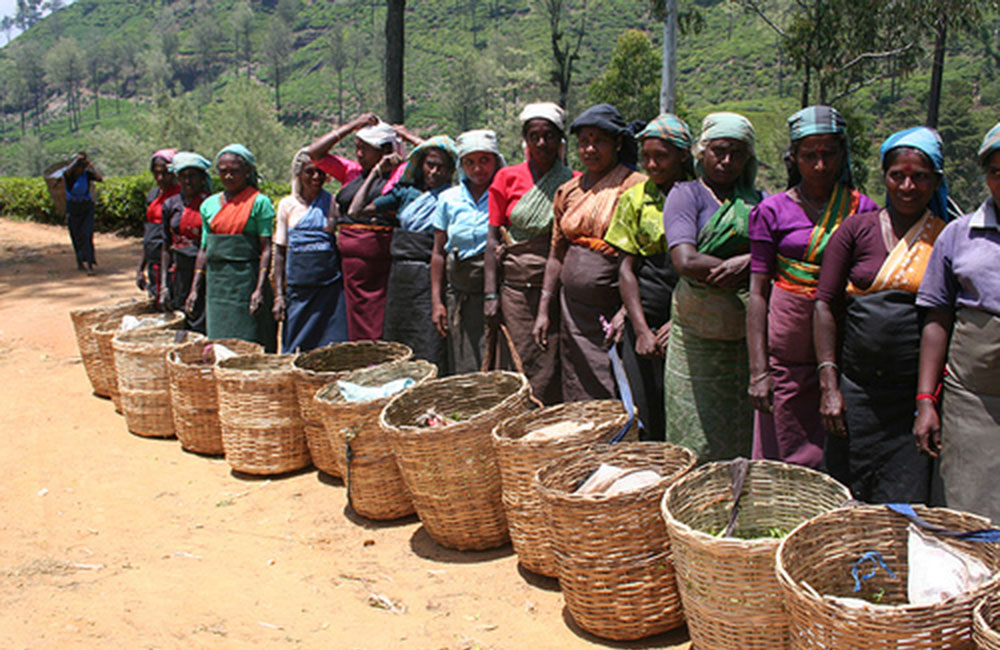
Ceylon tea farmers sense trouble brewing over Glyphosate ban
Tea farmers in Sri Lanka want their government to reauthorize the use of glyphosate for agriculture.
The country is one of only five in the world to ban the chemical, the active ingredient in Monsanto’s top-selling herbicide Roundup.
With last month’s news that the European Union extended authorization for glyphosate for five more years, Sri Lankan tea industry representatives say they are at a crippling disadvantage compared to their global competitors.
“Many plantation owners have started using alternatives which are not authorized. These are now coming up in various countries,” said Rohan Pethiyagoda, chairman of the Ceylon Tea Board, speaking at a planter’s forum last September.
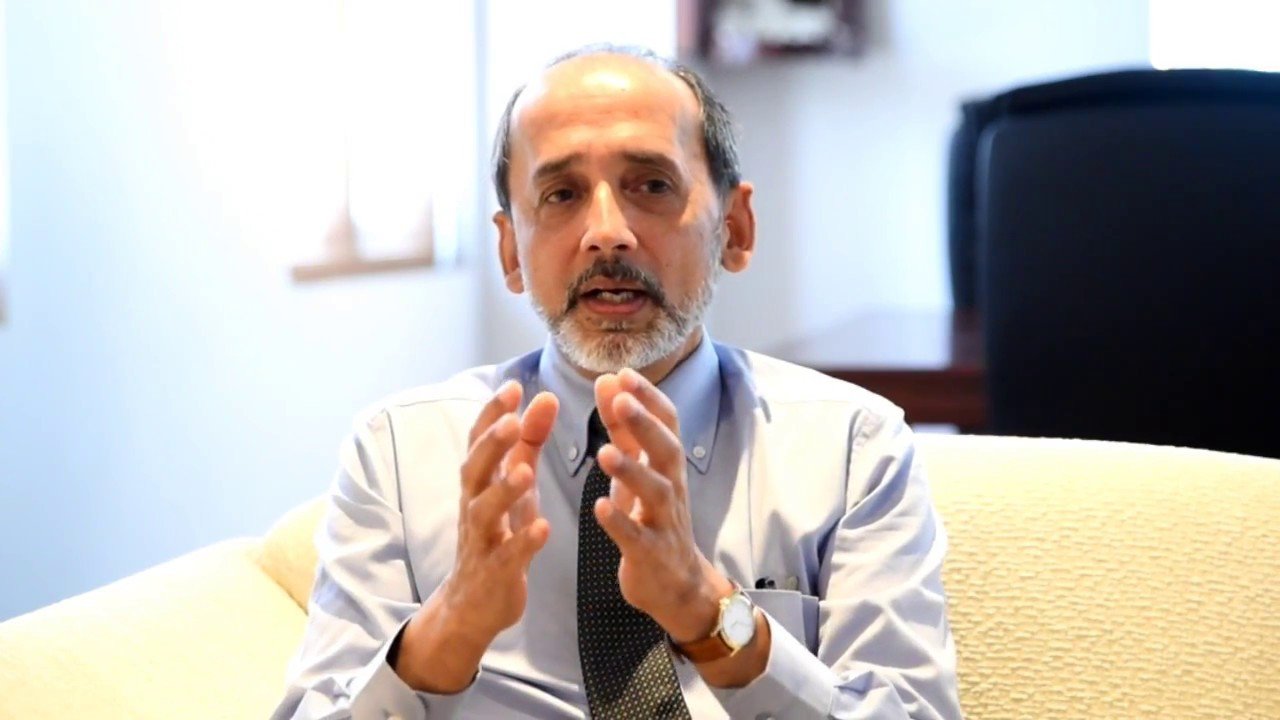
According to Pethiyagoda, “excessive residue” of such unauthorized chemicals was detected in Ceylon Tea exports bound for Germany and Japan last August.
“Sooner or later, this is going to lead to importing countries putting restrictions on Sri Lankan tea exports,” he said.
Tempest in a Teapot
Known by the country’s old name, Ceylon tea is the mainstay of Sri Lanka’s economy. The country is the second-largest exporter of tea in the world, after China.
The ban was put in place by presidential order in 2015 after a study suggested glyphosate was partially responsible for an epidemic of chronic kidney disease killing thousands of agricultural workers in hot, dry areas.
Glyphosate’s impact on health has divided scientists and regulators for years. In 2015, the UN’s International Agency for Research on Cancer (IARC) reported that glyphosate was “probably carcinogenic to humans,” while the UN Food and Agriculture Organization found the opposite.
“There is no evidence that glyphosate, or for that matter any pesticide, has a role in this kidney disease,” said Parakrama Waidyanatha, a scientist and former chairman of Sri Lanka’s Coconut Research Institute.

Parakrama Waidyanatha points to a joint report from the World Health Organization that found no evidence to implicate any agrochemical as the cause of chronic kidney disease.
“The government acted foolishly on a report by a few researchers whereas the mainstream scientists have repeatedly pointed out the fallacy of that report,” Waidyanatha told Bloomberg Environment.
Black-Market Glyphosate
In the face of rising crop losses because of overgrowing weeds, the Planters’ Association of Ceylon is asking the government to either overturn the ban or provide an effective replacement for glyphosate.
“Unfortunately, the situation is becoming extremely dire for the tea sector,” association chairman Roshan Rajadurai said in a news release.
According to Rajadurai, crop loss in the first 18 months after the ban totaled to some $100 million.
Last month, Sri Lankan police seized 5,400 packets of illicit glyphosate. Investigators say the contraband is smuggled into the country on boats from India, where it is sold at four to five times the original cost.
“Time and again we have called on the government to at least give us an alternative to glyphosate, and unfortunately there has been no response whatsoever,” Rajadurai said.
Without an effective weed killer, Rajadurai said additional labor costs for manual weeding, as well as lost production, are giving an advantage to Sri Lanka’s main competitors in the tea sector, Kenya and India.
In addition to the glyphosate question, Sri Lanka was also recently hit with a Russian prohibition on Ceylon tea.
Russia imposed the temporary ban in December after authorities allegedly discovered a Khapra beetle in shipment of tea. The beetle is one of the world’s most destructive pests of stored grain and seeds.
Sri Lankan officials speculate that the move was actually in retaliation for Sri Lanka’s decision to bar imported asbestos roofing materials from Russia.
Bigelow Tea Lawsuit
As the Sri Lankan tea scuffle unfolds, the potential for glyphosate to show up in tea is attracting notice in the U.S. as well.
R.C. Bigelow, Inc., the number-two selling tea brand in the U.S., is being sued by the Organic Consumers Association (OCA), an advocacy group based in Minnesota.
The lawsuit, filed on Dec. 15, alleges that glyphosate can be detected in some of the company’s tea products.
But the lawsuit isn’t claiming that Bigelow broke any laws—only that it deceptively labeled, marketed, and sold tea products as “All Natural” and “Natural,” in order to make the products appear environmentally friendly.
Bigelow stated that the levels of glyphosate detected were well below the government standard and called the lawsuit “beyond frivolous.”
“People have lost perspective,” said Cindi Bigelow, president and chief executive officer of the family-owned company.
According to OCA, samples of tea purchased at Wal-Mart Stores Inc. turned up glyphosate levels of 0.38 parts per million (ppm), which is below the federal standard for tea of 1 ppm.
“The level they found is 62 percent below the EPA standard,” said Bigelow, “And the standard for tea is five times higher than a carrot.”
Furthermore, Bigelow said that according to internal tests, levels of glyphosate in brewed tea are “absolutely zero.”
Asked whether she is concerned about tea coming from Sri Lanka, Bigelow said the company meticulously checks its supply chain.
“We buy a lot of tea from Sri Lanka and haven’t found any glyphosate.“
“It’s the ‘champagne of teas’,” she added.
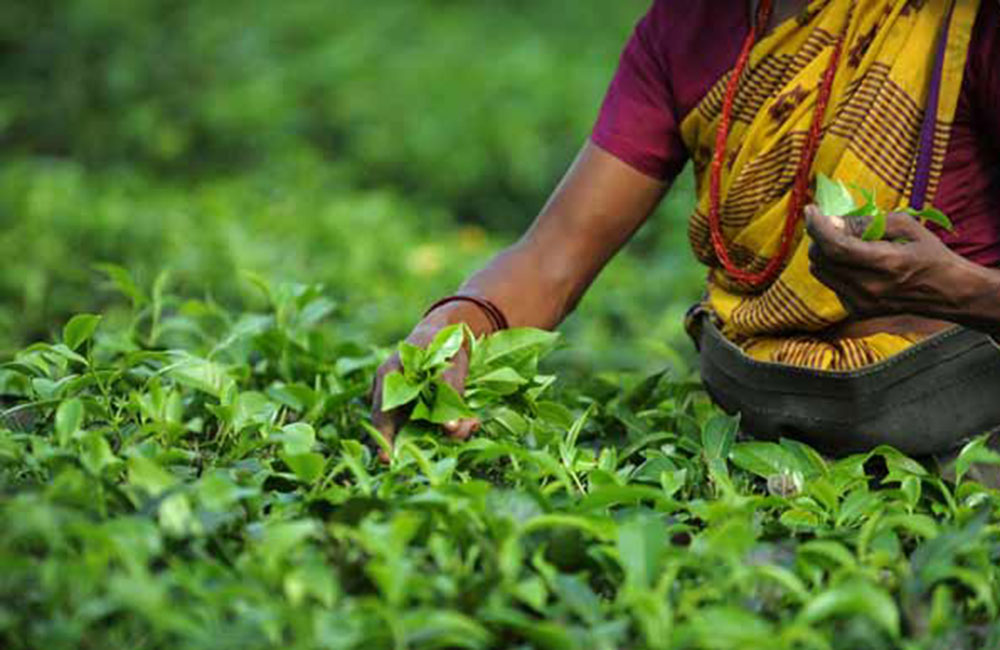
Sri Lanka to ban re-export of tea, areca nuts, pepper: President
Sri Lanka will ban the re-export of areca nuts (betel nut) and tea, President Maithripala Sirisena has said, as the country aspires to become a logistics hub with entrepot trade and build global supply chains.
The importation and re-export of pepper amid low global prices has led to a "collapse" of the industry, President Sirisena had claimed at an election rally in Badulla.
The import and re-export had hurt Sri Lanka's image of Ceylon Tea, President Sirisena, who heads Sri Lanka Freedom Party.
Though economic management has been entrusted to the United National Party, when ordinary people are affected, a National Economic Committee, appointed by him will look into such issues, President Sirisena had said.
Sri Lanka has failed to join global supply chains or become a large player in the rapidly growing processed food sector, due to import protection on raw materials.
Attempts by major exporters to made Sri Lanka the lynchin of a global supply chain in tea has also failed due to the opposition of a players who have managed to convince tea farmers that it will hurt prices.
However some types of tea is allowed in for re-export.
Some Sri Lanka based firms have built customers relationships with buyers and brands abroad to supply them with processed or semi processed food. The business can go to other suppliers in times of drought.
The Minister of Plantations Industries Navin Dissanayake has taken a far reaching decision to allow the import of coconut kernels to produce items like desiccated coconut and also bristle fibre to make brushes and other cleaning products.
A country can also add value to products without much processing by supplying goods fast and in smaller quantities using logistics advantages, or simply by sifting through different suppliers to fit exact price/quality requirements of a buyer.
Source : Economy Next

Electric and Hybrid cars the way to go
Sri Lanka seems to be on the right track when it comes to electric and hybrid cars as countries around the world have ramped up their promotion of hybrid and electric cars. As China tries to improve air quality and dominate new vehicle technology, the Chinese government expects one in five cars sold to run on alternative fuels by 2025.
France and Britain plan to end the sale of gasoline and diesel-powered cars by 2040.
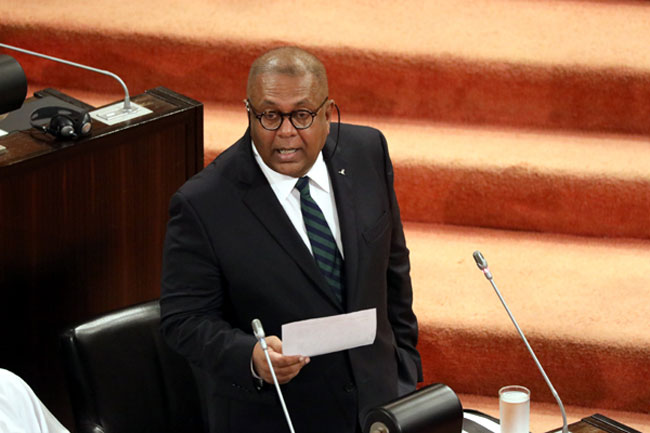
Caption: Finance Minister Mangala Samaraweera said that the import taxes on electric cars will be reduced by at least Rs. 1 million while the import tax on the high end fossil fueled cars will be increased by almost Rs. 2.5 million.
Presenting the budget for 2018, Minister of Finance Mangala Samaraweera announced that all vehicles in the country will be powered by non-fossil fuel sources by 2040. To this end, all government vehicles will be converted to hybrid or electric vehicles by 2025.
Furthermore, from January this year, Samaraweera said that Sri Lanka will follow the environmentally-friendly Euro 4 emissions standard as adopted by European nations.
To promote the use of electric cars, Minister Samaraweera proposed that taxes on the importation of electric vehicles including electric three wheelers, cars and buses will be reduced. As such, import taxes on electric cars was reduced by at least LKR 1 million.
In addition, the Loan to Value (LTV) ratio for motor cars which was set at 50:50 at was further relaxed for Hybrid vehicles where one could get a loan of up to 70% of the value.
Although electric vehicles and hybrids account for a small portion of the global market now, automakers including those, like Tesla, that produce only electric models, and giants like Volkswagen who produce both electric and hybrid vehicles have bet billions of dollars that such vehicles will soon be as cheap and ubiquitous as conventional cars.
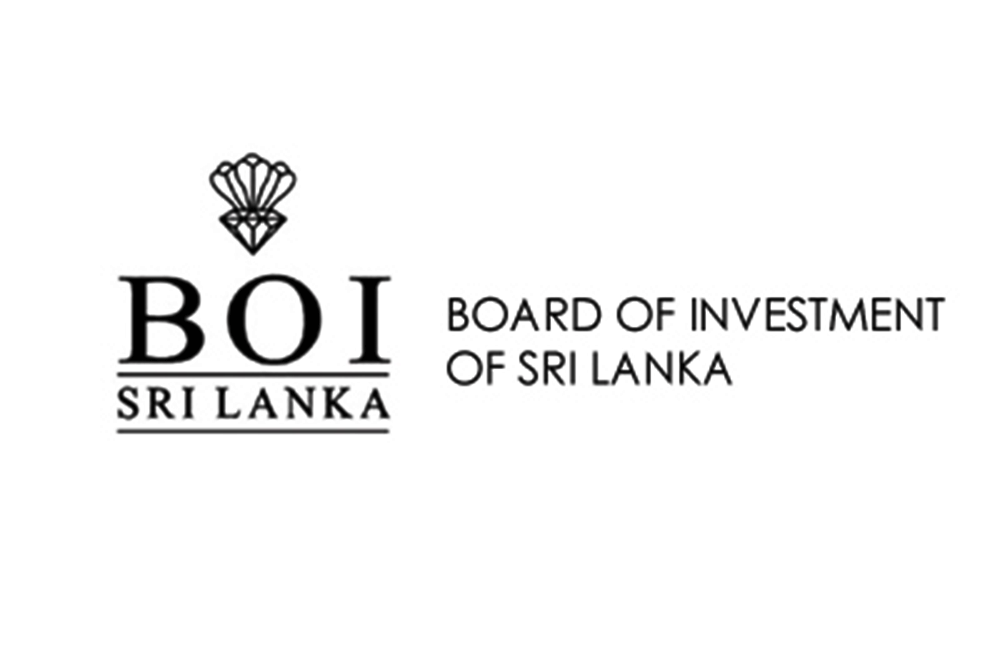
Sri Lanka Achieves Highest Ever FDI in 2017
Foreign Direct Investment (FDI) into Sri Lanka grew to over US$1.63bn in 2017, doubling from the US$802m achieved the previous year. The Board of Investment (BOI), the agency tasked with promoting and facilitating FDI, reported that US$1.63bn has been achieved in 2017, which is the highest ever surpassing the US$ 1.61 in 2014, with solid growth across key sectors.
The strong growth is a direct consequence of the Government’s reorientation of economic policy towards investment and export-driven growth, rather than debt-funded public infrastructure spending. Among the highest growth sectors were export-oriented Manufacturing (+27%) and Services which includes Tourism and IT (+50%) and Infrastructure (+190%). The highest FDI came from China, followed by Hong Kong, India and Singapore.
The BOI, under the Ministry of Development Strategies and International Trade, is the first point of contact for foreign investors into the country. “The outstanding FDI results have been achieved due to the hard work, talent and dedication of our investment promotion and facilitation teams as well as the pro-investor policy framework of the government to support both local and foreign investors,” BOI Director General Duminda Ariyasinghe said.
Over the past 2 years, the BOI has targeted both new investors, leveraging the country’s strengths and advantages, as well utilizing existing investors to increase reinvestments and to utilize their external networks to bring in new investors in sectors such as export-oriented manufacturing. The agency has focused on fast and transparent decision-making utilizing two high-level committees appointed by the Hon Prime Minister that provides approvals as well as accelerated operational clearances.
Ariyasinghe said BOI has embarked on several new initiatives including a virtual One Stop Shop for investment facilitation with 24 government agencies which will come into operation in 2018 to strengthen the approval and executional mechanisms. “The support and guidance from our Chairman and the Board of Directors have been a strength to us in achieving these strong results.”
Minister of Development Strategies and International Trade Malik Samarawickrama said that while Sri Lanka has achieved strong FDI results in 2017, the country has only scratched the surface of its full potential. “This is not a time for complacency but renewed focus to use the momentum to strengthen reforms to improve our Ease of Doing Business ranking, and efforts to attract high-quality investors from countries we have renewed bilateral relationships with.
The Minister said the country’s target was to achieve US$5b in FDI by 2020. Samarawickrama said he was confident of achieving US$2.5bn of FDI in 2018. In order to facilitate FDI, the new Inland Revenue Act provides accelerated investment allowances over and above normal depreciation until companies recover their total fixed investment. The foreign exchange regime too has been liberalized to improve the investment climate via the new Foreign Exchange Act.
The BOI has initiated work on developing several new export promotion zones including Milleniya, Bingiriya, Weligama and Mawathagama. These will be the first comprehensive BOI zones to be developed since 2000.
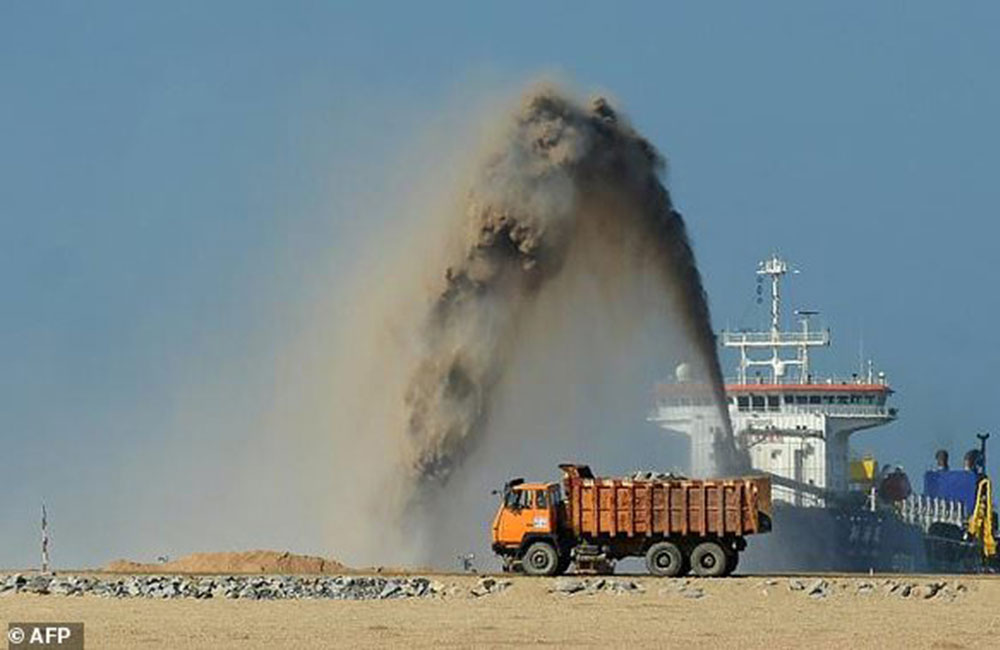
China boosts investment in Sri Lankan mega-project
China is to invest $1 billion for the construction of three 60-storey buildings at a mega-project near the Colombo harbour.
The deal follows an earlier Chinese investment of $1.4 billion to carry out reclamation work for the wider Colombo International Financial City development, strategically located next to Sri Lanka’s harbour, the only deep-sea container port in the region.
The countries hope the project, will create a financial centre in the Indian Ocean comparable with those in Singapore and Europe, drawing billions in foreign investment and thousands of jobs.
Sri Lankan officials said 60 percent of the 269 hectare (672 acre) reclamation, due to finish next year complete with a yacht marina, had already been completed.
“China Harbour (company) will put in $1 billion to build three buildings,” Sri Lanka’s Urban Development Minister Champika Ranawaka told reporters in the capital.
“These three 60-storey buildings will be able to attract more foreign companies into Sri Lanka.”
The controversial project was formally launched after a visit to Colombo by Chinese President Xi Jinping in 2014 but work was suspended by the new administration, which came to power in January the following year.
Sri Lankan Prime Minister Ranil Wickremesinghe visited the site Tuesday to inspect the progress of reclamation.
“We will shortly have legislation to turn this area into a financial centre like in Europe or Singapore,” he said.
The CCCC has said it expects the project to create 83,000 new jobs and help Sri Lanka attract another $13 billion in direct foreign investment to develop infrastructure.
Source: Business Recorder
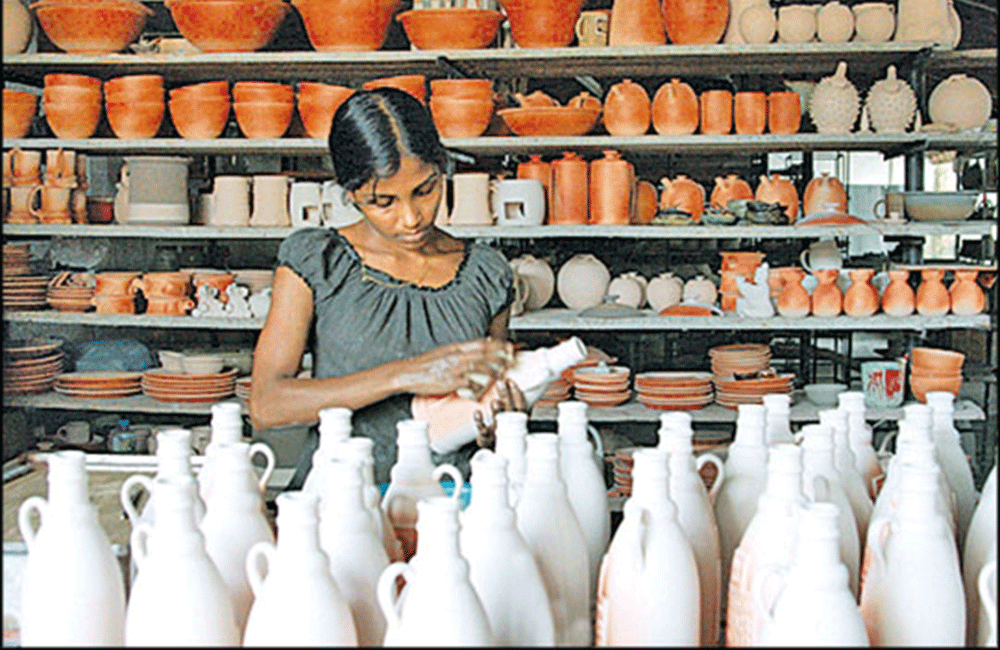
ADB to provide USD 75 million to develop the SME sector
The Asian Development Bank’s (ADB) Board of Directors has approved $75 million in additional financing to continue support toward the development of small and medium-sized enterprises (SMEs), considered vital for economic growth and job creation in Sri Lanka.
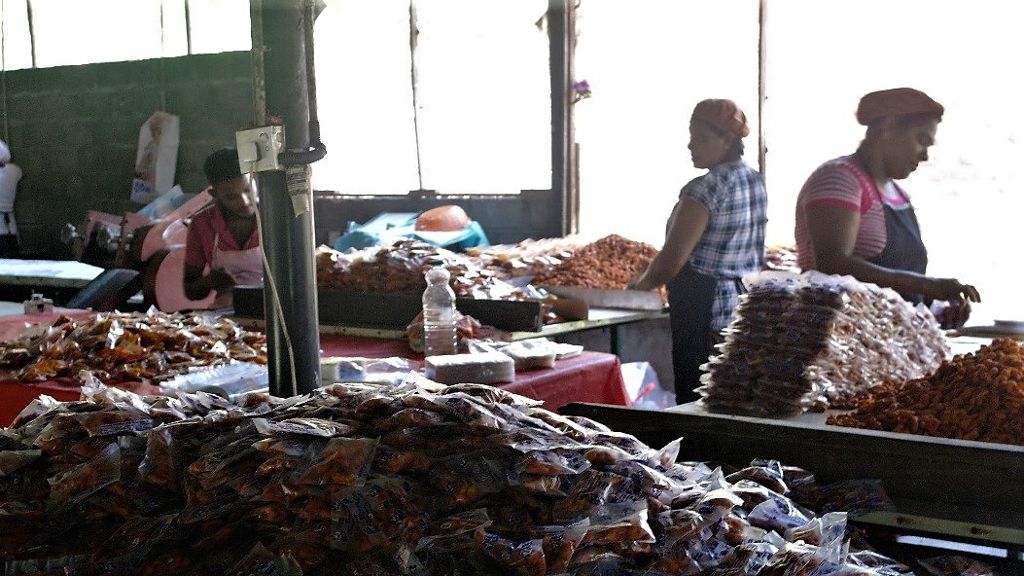
Many of the SMEs have no previous experience dealing with formal financial institutions like banks, are led by women, or based in rural areas.
“SMEs have the potential to reduce regional inequalities in Sri Lanka given that SMEs are more widespread throughout the country than larger enterprises, which are mainly based in the capital Colombo,” said Don Lambert, an ADB Principal Finance Specialist. “The additional support will ensure that more SMEs have wider access to credit.”
SMEs contribute about 45% of Sri Lanka’s gross domestic product and provide about half of the country’s jobs. However, access to finance remains a significant challenge for the SMEs. About 30% of local enterprises cite this issue as a major deterrent to their growth and development—one of the highest percentages among ADB developing member countries after Afghanistan, Mongolia, and Nepal.
Many of these SMEs have no previous experience dealing with formal financial institutions like banks, are led by women, or based in rural areas.
The additional financing for the SME Line of Credit Project will increase the available loans for participating banks to $175 million by 2020, from the original loan figure of $100 million approved in February 2016. This additional support will further encourage local partner banks to grow their SME portfolios—particularly to enterprises outside Colombo or are women-led—and eventually help Sri Lanka address some of its major development challenges through economic diversification, job creation, women empowerment, and inclusive growth.
Apart from providing wider access to finance to SMEs, the project is also developing innovative SME financing schemes, while building capacity of SMEs particularly in information and communications technology, business process outsourcing, fruits and vegetables, as well as processed food and beverage.
ADB, based in Manila, is dedicated to reducing poverty in Asia and the Pacific through inclusive economic growth, environmentally sustainable growth, and regional integration. Established in 1966, it is owned by 67 members—48 from the region.
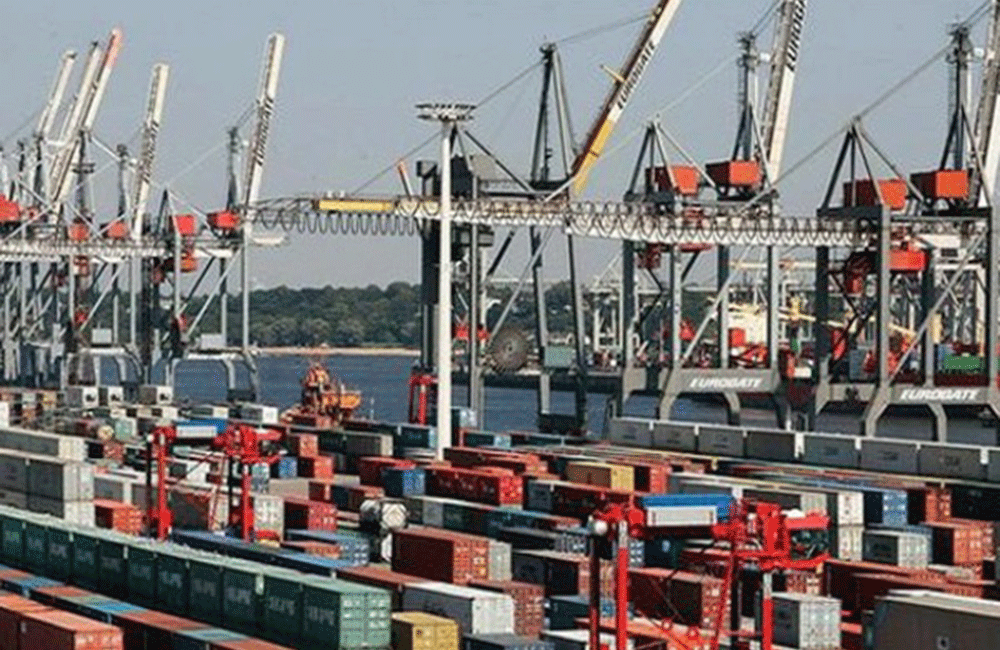
China, Sri Lanka’s joint development in Hambantota rockets from vision to reality in 2017
Hambantota, located at the south end of Sri Lanka, only 10 nautical miles from the international shipping route in the Indian Ocean, is now racing along a developmental fast-track.
From the foundation stone of the Sri Lanka-China Industrial Zone being laid in Hambantota at the beginning of this year, to the official launch of operations at the Hambantota Port through a Sri Lanka-Sino joint venture at the end of the year, cooperation between Sri Lanka and China in Hambantota has flourished in 2017, with the vision of further developing Hambantota gradually becoming the reality.
PORT: BUILDING, OPERATING IN UNION
On the construction site of the almost-finished second phase of the Hambantota Port, gantry portal cranes and some other port facilities raise their heads upwards to the sky.
Liu Zhaohui, the Assistance Project Manager from China Harbour Engineering Company Ltd. (CHEC) said, "we had finished all the civil engineering of the project by Nov. 2015 and most of the handling facilities will have been delivered to the project site within this year. Only two bunkering barges will be remaining, by mid-May next year, and the second phase will be entirely completed."
On Dec. 9, Sri Lanka and China officially launched the operations at the Hambantota Port through a joint venture between Sri Lanka Ports Authority and China Merchant Port Holdings.
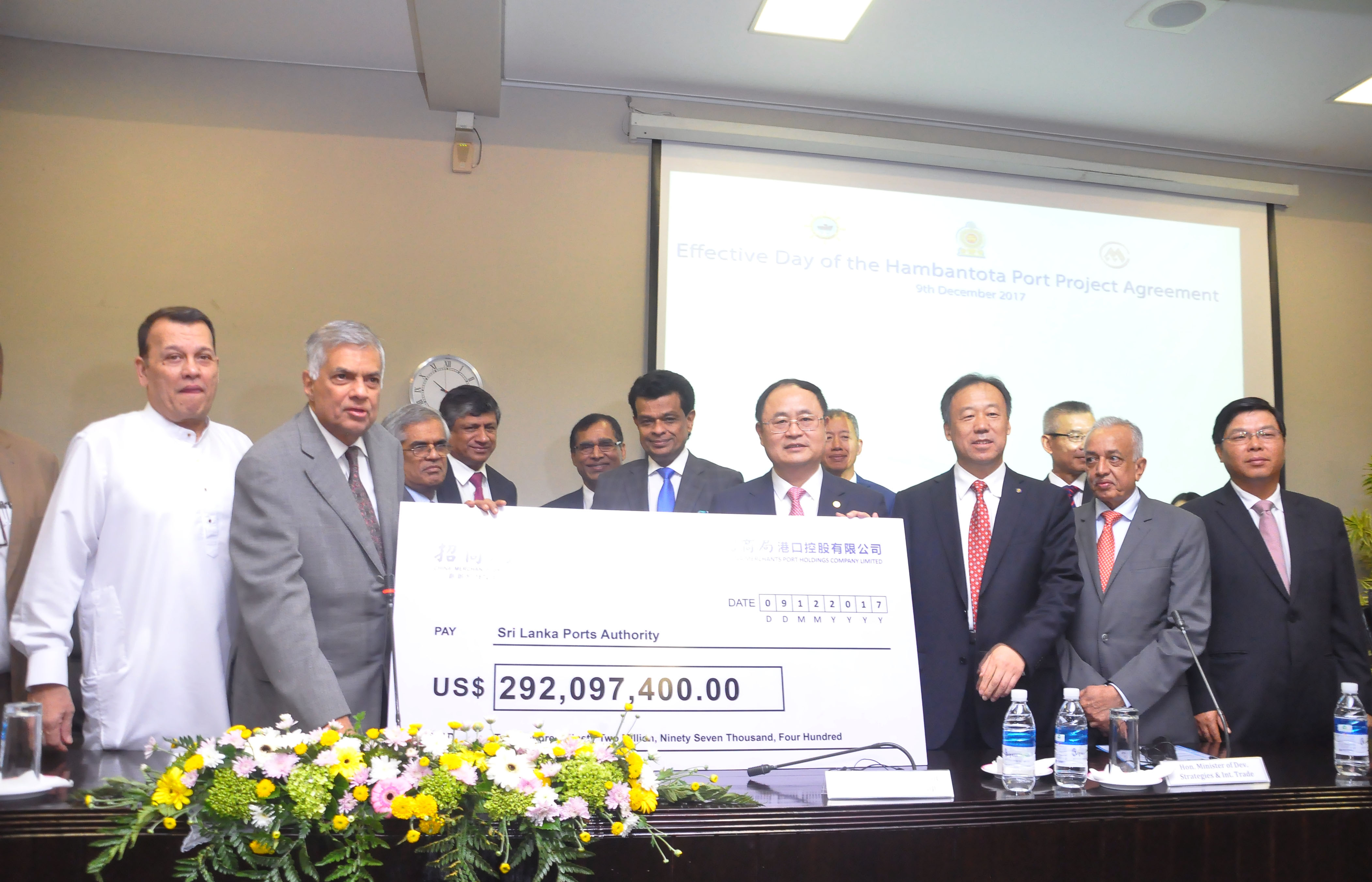
The USD 300 million initial payment under the 99-year lease agreement was officially handed over to Sri Lanka on December 09.
Sri Lankan Prime Minister Ranil Wickremesinghe said on the day of the official launch that, "we have made arrangements for the management and long-term success of the Hambantota Port. The Sri Lankan and Chinese joint venture, which has taken over the management of this port, and its operations, will ensure an additional port in the Indian Ocean."
The Sri Lankan side is highly confident in the future operations of the Hambantota Port, so are the Chinese.
"We are aiming to turn the Hambantota port into a major hub connecting neighboring countries as well as the rest of the world. That is the national vision of Sri Lanka and it is also our mission as an operator," Deputy General Manager of CM Port, Hang Tian, told Xinhua in a recent interview.
Hang said, "we strongly believe that the Hambantota Port will play a more important role in Sri Lanka's shipping industry than the Colombo Port, since the former is located closer to the international shipping route. CM Port will apply their advanced experience of running ports in Shenzhen, China, to the Port of Hambantota."
EXPRESSWAY: DIFFICULTIES OVERCOME, GOALS ACCOMPLISHED
Twenty kilometers north of Hambantota, lies the construction site of the fourth section of Sri Lanka's Southern Highway Extension Project. On a daily basis, Sri Lankan and Chinese workers hustle and bustle together to build the highway, while precast beams are piled up on the ground. One after another, bridge piers are being erected with parts of the bridge floor which have already been well laid.
"We have finished half of the overall work this year despite elephants, peacocks and monkeys living in the jungle close to the construction site causing some difficulties to our work," Yang Senyan, the Contractor's Representative of this CHEC project said.
Yang added, "it is clear to us that the wildlife is of great value to both human and nature, therefore, in order to reduce the impact of construction on the local wildlife, we built two special bridges as part of our project, with the space beneath the bridges left for the animals to ramble from one side to the other."
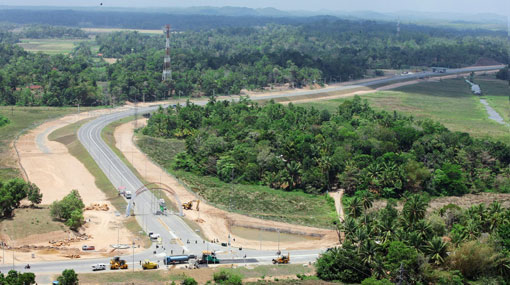
Construction underway to complete the third phase of the southern expressway from Matara to Hambantota connecting the Mattala International Airport to Colombo.
Sixty kilometers west, is the first section of the Southern Highway Extension Project. With mountains, gullies and swamps, the condition of the terrain here is much more complicated than the fourth section of the project.
China National Aero Technology International Holding Corporation's Vice Project Manager, Zhou Yue, explained that the first 13 kilometers of the section traverses the well-known Ellewela flooded area, while the last 17 kilometers is a hilly terrain.
What's more, Sri Lanka's heavy rains this year gravely impacted the project.
Zhou said many of the construction materials and equipment were washed away and the culverts under construction were also severely scoured. The project was forced to be suspended for several days due to the torrential rains.
"However, we quickly adjusted ourselves to the restoration work following the rain. By the end of the year, we have accomplished more than 50 percent of the workload in the project. Even though we ran into many difficulties this year, we have successfully turned the tide," Zhou said.
From Matara to Hambantota, the Southern Highway Extension Project is divided into four sections, all contracted to Chinese companies.
The Sri Lankan Road Development Authority's senior Project Director of the Southern Highway Extension Project, R. M. Gamini, told Xinhua that the construction of the Hambantota Highway was progressing well and they hoped to finish it by the end of 2019.
He said this Highway would connect many parts of the country such as the Eastern Province, the Uva Province and even other Southern districts.
"This Expressway will benefit the local communities as it will ease the movement of goods. The expressway will also help vendors along it to transfer their goods to Colombo within a short period of time and this will improve their livelihoods," Gamini said.
INDUSTRIAL ZONE: FROM HERE TO THE FUTURE
The Port serves as a hub of cooperation between Sri Lanka and China in Hambantota, and the Highway will provide essential infrastructure support for the area.
China and Sri Lanka are also eyeing cooperation on the Industrial and Logistics Zone in Hambantota.
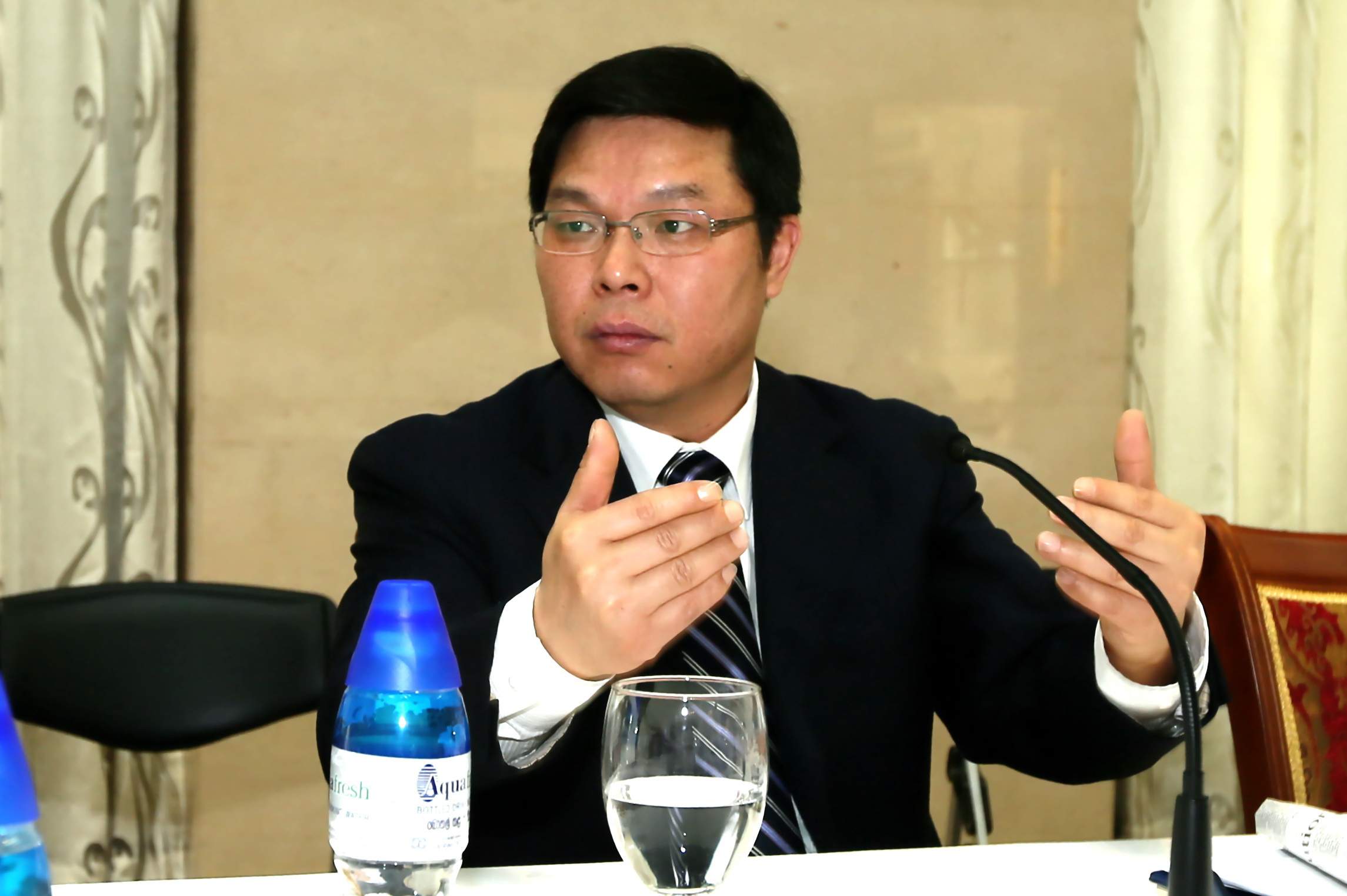
China's Ambassador to Sri Lanka Yi Xianliang told Xinhua, "in the future, China will continue to push forward cooperation with Sri Lanka on the Zone."
In January, the foundation stone of the Sri Lanka-China Logistics and Industrial Zone was laid in Hambantota, and an office for attracting investments for the Zone was established there later in November.
Currently, the CHEC is negotiating with the Sri Lankan government on the development of the Zone, and both parties are now seeking potential investors to join the Zone. More than 30 enterprises have visited the Zone and expressed their willingness.
CHEC's Joint Managing Director of Representative Office in Sri Lanka, Zhang Lianjiu, told Xinhua that more than 10 enterprises have forwarded their Letter of Interest.
The Sri Lankan cabinet has approved the state-run utility, the Ceylon Electricity Board to jointly develop a 400-megawatt liquefied natural gas power plant in the Zone with the China Machinery Engineering Corporation.
According to the proposal, the Sri Lanka-China Industrial and Logistics Zone, covering an area of 50 square kilometers, will not only provide basic shipping services, but also embark on port-related industries, such as refining and sea-product processing industries.
Sri Lankan Ports and Shipping Minister Mahinda Samarasinghe believes with the Port of Hambantota being the start of Sri Lanka-Sino cooperation in the region, a promising future lies in the Zone.
"There will be several industrial zones in the Hambantota district as well as other selected districts where we are expecting Chinese companies to set up, invest and contribute further," he said.
(Xinhua)
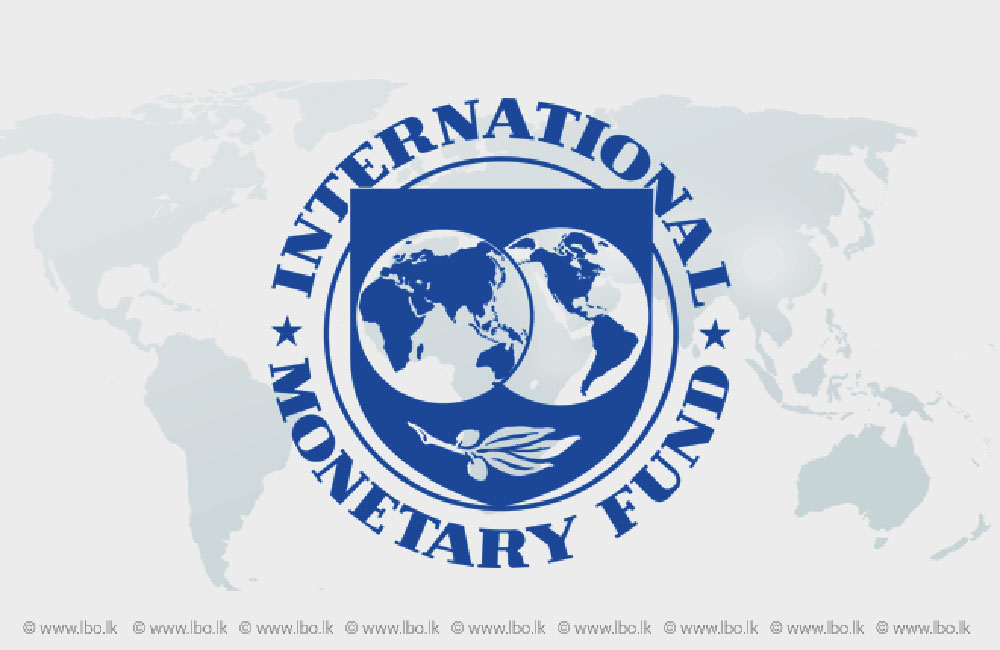
Sri Lanka seeks to modify performance criteria; EFF broadly on track: IMF
Sri Lanka’s performance under the Extended Fund Facility (EFF) program has remained broadly on track despite a series of weather-related supply shocks, the IMF said.
Following the Executive Board’s discussion of the third EFF review, Mitsuhiro Furusawa, Acting
Chair and Deputy Managing Director of IMF, said country’s fiscal performance has been satisfactory and all targets until September were met.
“Nevertheless, Sri Lanka’s high debt burden, large gross financing needs, and weak financial performance of state-owned enterprises increases the importance of further fiscal consolidation,” Furusawa said.
“Timely progress in structural reforms, including tax administration and energy pricing, will support fiscal consolidation.”
Sri Lanka’s budget targets a primary surplus of 1 percent of GDP and frontloads fiscal consolidation towards the authorities’ objective of reducing the overall fiscal deficit to 3.5 percent of GDP by 2020.
Meanwhile, in a letter to IMF’s Christine Lagarde, Finance Minister and Central Bank Governor has requested the modification of the performance criterion on central government primary balance and the indicative target on tax revenue for December 2017.
The primary balance of the central government on a cash basis is defined as central government revenues and grants minus expenditures and net lending, plus interest payments.
Central government tax revenue refers to revenues from taxes collected by the central government. It excludes all revenues from asset sales, grants, and non-tax revenues.
Source : LBO
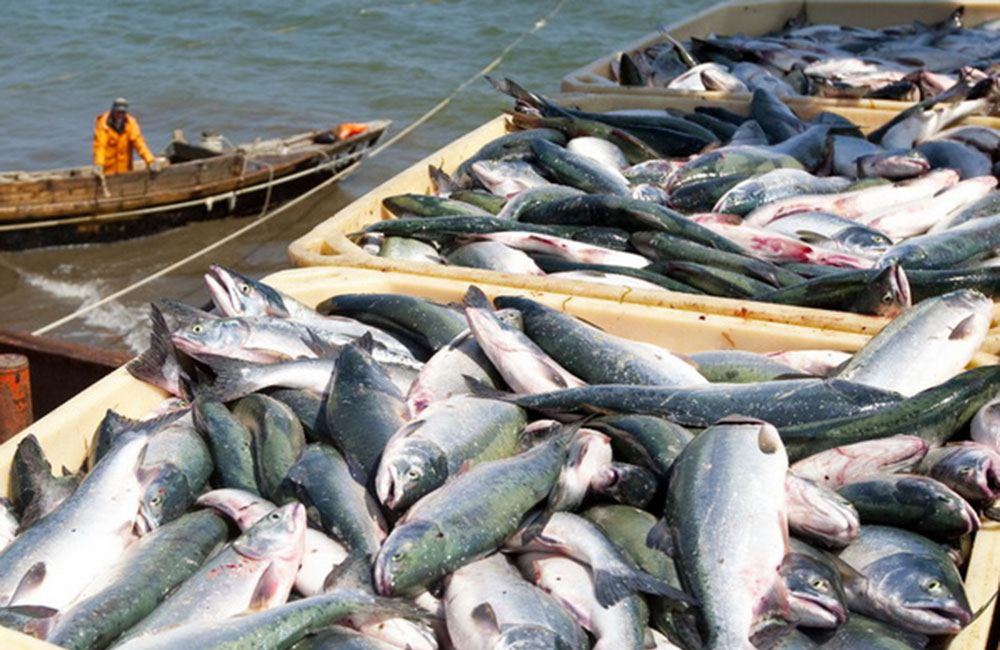
Fish exports to EU up by over 45%
Sri Lankan fish exports to the European Union (EU) countries have recorded a 45.9 percent increase by the end of 1 November 2017 since the lifting of the European Union fish exports ban on June 22, 2016, states a Fisheries and Aquatic Resources Development Ministry press release.
The release said fish exports to the European Union countries from January to September 2017 amounted to 18,262 metric tons which recorded a total value of Rs. 28,685 million. This was a 45.9 percent increase compared to the exports during the previsions year. Revenue-wise, it was a 47.7 percent increase.
Minister Mahinda Amaraweera who noted this development at a conference held at his Ministry said fish exports earmarked for the European Union were handled by 52 processing centres and 16 packaging units to ensure high quality.
He directed officials to maintain constant vigilance over the matter to ensure that this high quality is maintained in the future too.
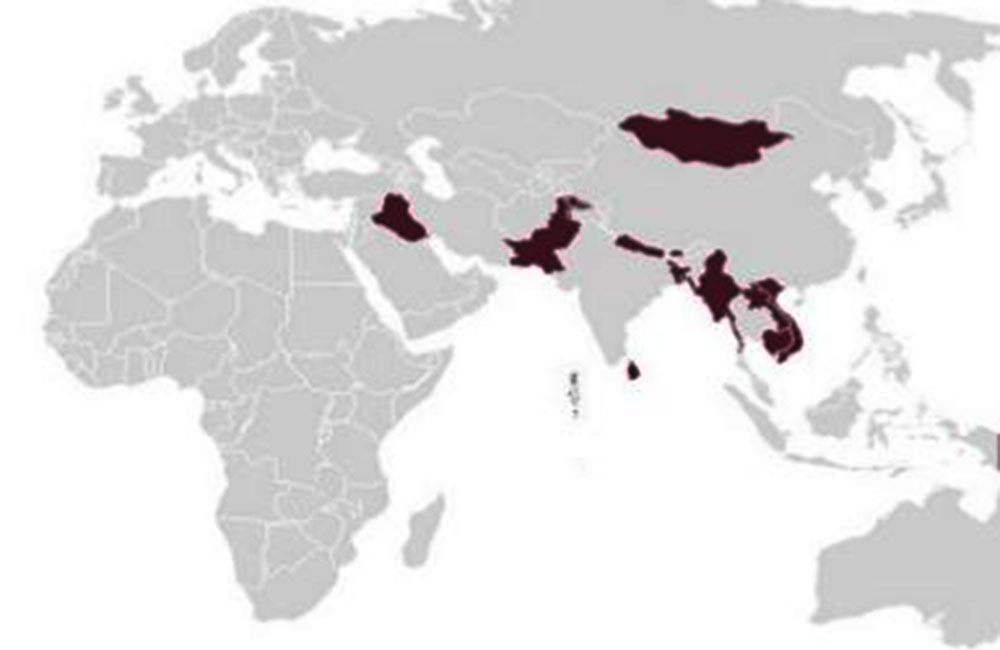
Sri Lanka among top frontier markets to invest
Frontier markets, which include the likes of Sri Lanka and Argentina, are potentially lucrative because they’re at a relatively early stage of their development.
However, the political and economic backdrops of these countries can also be unstable, which means investors need to prepare themselves for a rocky ride.
This means frontier markets won’t be for everyone, according to Juliet Schooling Latter, research director at Chelsea Financial Services. The positives, she suggested, include a low correlation to other asset classes, very good demographics and plenty of under-researched companies.
Which frontier areas are most exciting?
“We view opportunities in Sri Lanka as relatively overlooked and valuations are decidedly cheap despite there still being high-quality management in place,” Oliver Bell, Manager of the T.Rowe Frontier Markets Equity fund said.
Its location adds to its attractiveness and potential. “Recent infrastructure projects, including port developments, are likely leading to a construction boom and there are some good stocks in which to play this,” he added.
“Argentina and Pakistan (which has been reclassified to emerging market status) have been our biggest exposures because their structural developments have been conducive to business growth and investment,” he said.
(BT)
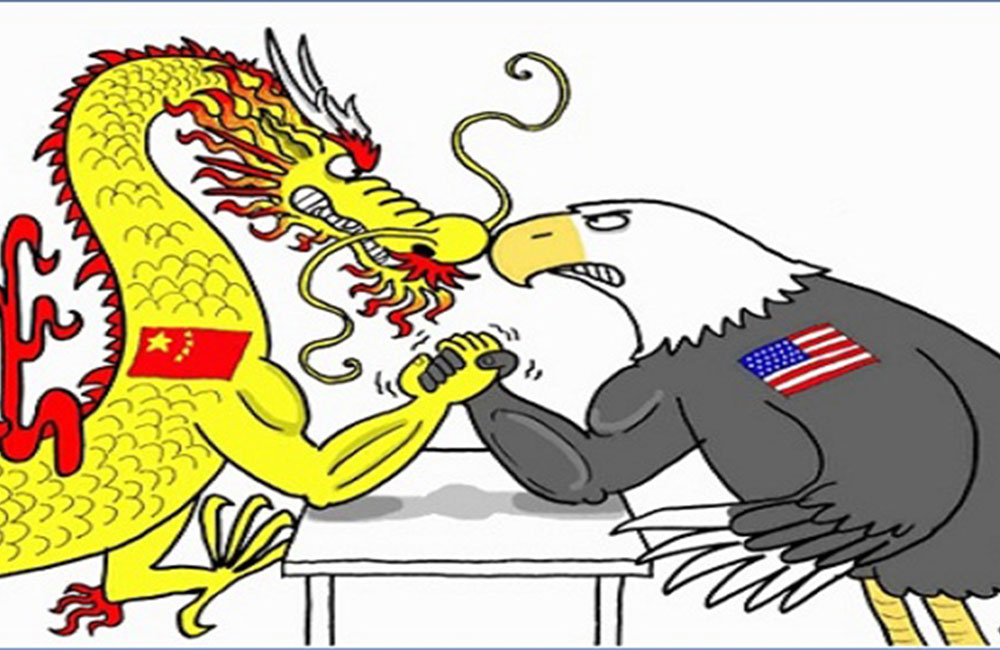
China to Overtake U.S. Economy by 2032 as Asian Might Builds
The growing importance of Asia’s major economies will continue in 2018 and beyond, according to a league table that sees the region dominating in terms of size in just over a decade, Bloomberg reported.
The study by the Centre for Economics and Business Research in London sees India leapfrogging the U.K. and France next year to become the world’s fifth-biggest economy in dollar terms. It will advance to third place by 2027, moving ahead of Germany.
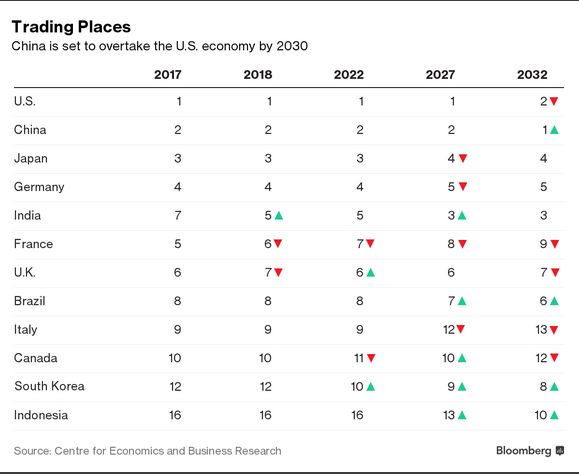
In 2032, three of the four largest economies will be Asian -- China, India and Japan and, by that time, China will also have overtaken the U.S. to hold the No. 1 spot. India’s advance won’t stop there, according to the CEBR, which sees it taking the top place in the second half of the century.
Also by 2032, South Korea and Indonesia will have entered the top 10, supplanting the Group of Seven nations of Italy and Canada.
Page 18 of 20